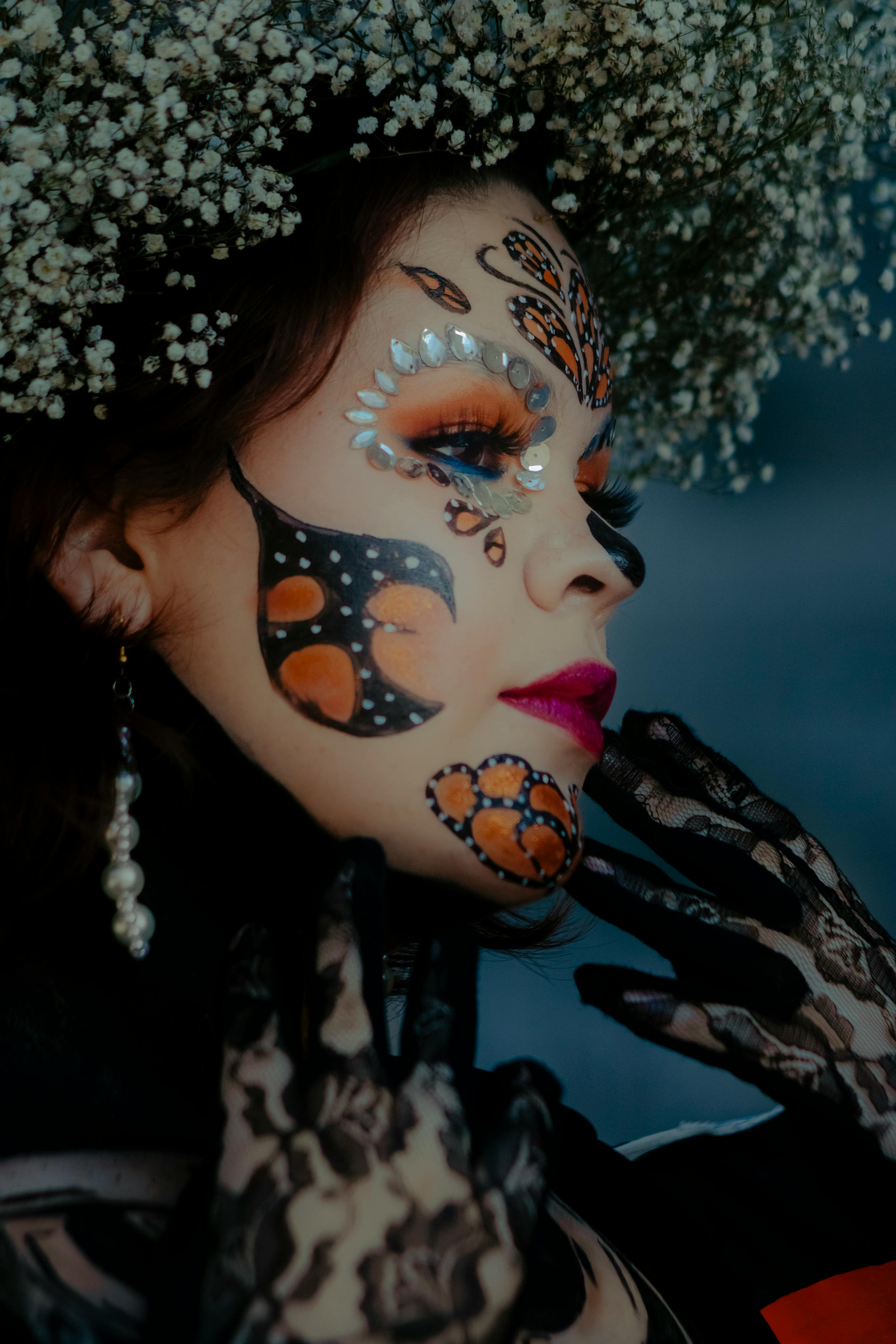Picture this: you’re stepping into a world where emotions and imagination splatter across canvases in vibrant colors and bold strokes, a realm where artists communicate their innermost thoughts without the constraints of realistic representation. That’s the heart and soul of Abstract Expressionism, an art movement that revolutionized the way we interpret art and its creation. In my latest exploration, “The Art of Abstract Expressionism: Unveiling the Creative Process,” I pull back the curtain on the intricate and often misunderstood methods behind this captivating style. Join me as I venture into the minds of the geniuses who dared to express the inexpressible, creating a visual language that speaks volumes beyond what words could ever convey.

Understanding Abstract Expressionism
Historical origins of abstract expressionism
The movement of Abstract Expressionism emerged in the early 1940s, primarily in New York City, marking a pivotal point in art history. It was a time when many European artists, fleeing the devastation of World War II, brought new ideas and techniques to America. This convergence of cultures and philosophies created a fertile ground for the development of a unique and inherently American art movement. Abstract Expressionism was born from the need to express the inexpressible, to convey emotions and ideologies that the horrors of the war and the complexities of modern life had rendered beyond words. It was an art form that sought to break away from traditional representations, focusing instead on the act of painting itself.
Key principles of abstract expressionist art
Abstract Expressionism is characterized by its departure from representational form, an emphasis on the creative process, and a focus on the canvas as an arena to express inner emotions. The movement placed significant weight on color, shape, and the physical act of painting, often leading artists to adopt techniques such as dripping, smearing, and using unconventional tools to apply paint. The key principle was to evoke emotion and provoke a reaction from the viewer, making the experience of viewing the artwork as important as its aesthetic qualities.
Important artists and artworks of the movement
Jackson Pollock, Mark Rothko, Willem de Kooning, and Franz Kline are among the most celebrated figures of Abstract Expressionism. Pollock’s technique of drip painting, where he would splatter and pour paint onto a canvas laid out on the floor, thrust him into the spotlight. His piece “Number 1A, 1948” exemplifies this method. Rothko, known for his vast fields of color, evoked complex emotional responses with paintings like “Orange and Yellow.” De Kooning’s blend of abstraction and figurative work, as seen in “Woman I,” and Kline’s bold, black-and-white abstractions, notably “Mahoning,” also represent significant contributions to the movement.
The Philosophy Behind Abstract Expressionism
Impact of existentialist philosophy
Abstract Expressionism was deeply influenced by existentialist philosophy, which posited that life has no inherent meaning beyond what we give it. This existential outlook propelled artists to seek new ways of expression, focusing on the individual’s experience and emotional state. Art became a medium through which artists explored and confronted the absurdity of existence, an endeavor to find personal meaning in a post-war world where traditional values had been upended.
Non-representational art and freedom of expression
The move towards non-representational art was a conscious choice to break free from the constraints of traditional art forms and societal expectations. Abstract Expressionists believed that by eschewing recognizable imagery, they could tap into a more direct form of emotional expression. This freedom allowed them to explore the depths of their psyche, their fears, and their hopes, without the need to conform to recognizable forms or narratives.
Emphasis on the subconscious and automatism
A significant influence on Abstract Expressionism was the work of psychoanalyst Sigmund Freud, particularly his theories on the subconscious. Many artists of the movement practiced automatism, a method of relinquishing conscious control to allow the subconscious mind to guide the creation of the artwork. This method was seen as a way to access more authentic and uninhibited forms of expression, revealing the complex inner workings of the artist’s mind.

Creative Process of Abstract Expressionism
Role of spontaneity and improvisation
Spontaneity and improvisation were the heart and soul of the Abstract Expressionist creative process. Artists like Pollock eschewed preconceived notions and plans for their artworks, instead allowing the act of painting to dictate the direction and outcome. This approach was believed to capture the purest form of emotional and creative expression, making the artwork a direct reflection of the artist’s inner state at the moment of its creation.
Use of unconventional techniques and materials
Abstract Expressionists frequently experimented with unconventional techniques and materials, including house paints, non-traditional tools, and canvases of unprecedented sizes. These innovations not only allowed them to work on a larger scale but also to manipulate paint and materials in novel ways, creating textures and effects that were previously unattainable with traditional methods.
Significance of scale and size in the artworks
The monumental scale of many Abstract Expressionist works is not a coincidence; it was a deliberate choice to engulf the viewer, to make the experience of the artwork immersive. Large canvases invited viewers to step into the world of the painting, to become part of its emotional landscape. The scale also served to amplify the impact of color and form, making these elements almost physically palpable.
Color in Abstract Expressionism
Understanding color theory
Color theory played a crucial role in Abstract Expressionism. Artists meticulously considered the psychological and emotional impacts of colors, using them to evoke specific feelings or atmospheres. For example, Rothko’s use of soft, blurred edges and carefully chosen color combinations was aimed at eliciting profound emotional responses, drawing viewers into a contemplative state.
Expression of emotion through color
Color was more than just a visual element for Abstract Expressionists; it was a conduit for emotional expression. The choice of colors and their interplay on the canvas could articulate complex emotional states, from turmoil and conflict to serenity and transcendence, often with more precision and nuance than words could achieve.
Dominant color schemes in abstract expressionist artworks
While there was no single color palette that defined the movement, many Abstract Expressionist works feature bold, sometimes jarring color schemes that reflect the intensity of the emotions being expressed. At other times, muted or monochromatic color schemes were used to create a sense of calm or melancholy. The diversity in color schemes underscores the movement’s emphasis on individual expression over conforming to a particular style.

Form and Space in Abstract Expressionism
Negation of traditional composition
Traditional concepts of composition and perspective were often disregarded by Abstract Expressionists, who favored a more intuitive arrangement of forms and space. The canvas was seen as an arena in which to act, rather than a space to depict a recognizable scene. This approach allowed for a more direct, unmediated expression of emotion and intention.
Experimentation with form and shape
Shapes and forms in Abstract Expressionist art are generally abstracted or completely non-representational, serving more as expressions of inner states than as depictions of the external world. The shapes are often organic, suggesting movement and change, and are used to convey the fluid nature of emotion.
Manipulation of space in the artworks
The manipulation of space in Abstract Expressionist artworks often confounds traditional expectations. Spatial relationships are ambiguous, with no clear distinction between foreground and background. This ambiguity serves to draw the viewer into a more active engagement with the work, inviting personal interpretation and emotional response.
Styles Within Abstract Expressionism
Action painting
Action painting is closely associated with Jackson Pollock and emphasizes the physical act of painting itself. It’s characterized by the use of drips, splatters, and gestures that are expressive of the artist’s psychic state. The canvas becomes an arena in which the artist acts, reflecting the dynamic process of creation.
Color field painting
Color field painting, as practiced by Rothko and others, focuses on the use of large areas of color to evoke an emotional response. The emphasis is on the contemplative experience of color and form, with the artwork serving as a medium for meditation and introspection.
The New York School
The New York School was not a formal school but rather a group of artists based in New York City who were central to the development of Abstract Expressionism. This group included artists like Pollock, Rothko, de Kooning, and Kline, who, despite their diverse styles, shared a commitment to expressing personal truths through their art.

Abstract Expressionism and Society
Reflection of post-war angst and liberation
Abstract Expressionism emerged in a world that was grappling with the aftermath of World War II, reflecting the existential angst and search for meaning that defined the era. At the same time, the movement epitomized a sense of liberation—both in terms of artistic expression and in the broader sociopolitical context, as it represented a break from traditional constraints.
Influence on popular culture and contemporary art
Abstract Expressionism has had a lasting impact on popular culture and contemporary art, influencing everything from graphic design to advertising. Its focus on emotional authenticity and individual expression continues to resonate with artists and audiences alike, shaping the visual language of our time.
Criticism and controversy
As with any significant movement, Abstract Expressionism has not been without its critics. Some have dismissed it as overly abstract or lacking in substance, while others have criticized its emphasis on the individual artist’s psyche as indulgent. Despite these controversies, the movement’s impact on the art world and its capacity to communicate complex emotional states remain uncontested.
Link Between Abstract Expressionism and Other Art Movements
Influence of Surrealism and Cubism
Abstract Expressionism was influenced by earlier movements such as Surrealism and Cubism, drawing from their exploration of the unconscious and their break from traditional representational art. The Abstract Expressionists took these ideas further, developing new methods to express the ineffable realities of the human psyche and experience.
Comparison with Pop Art or Minimalism
In contrast to Pop Art’s embrace of popular culture and imagery and Minimalism’s focus on simplicity and objectivity, Abstract Expressionism’s focus on subjective emotional expression sets it apart. However, both movements can be seen as reactions to the dominance of Abstract Expressionism, each proposing a different path forward for contemporary art.
Legacy of Abstract Expressionism on contemporary art movements
The legacy of Abstract Expressionism is evident in various contemporary art movements, from Neo-Expressionism to contemporary street art. Its emphasis on the personal and the emotional, as well as its innovations in technique and form, continue to inspire artists to explore the depths of human emotion and experience.
Personal Expression in Abstract Expressionism
Artist’s emotions and experiences as central to the artwork
In Abstract Expressionism, the artist’s emotions and experiences are not just reflected in the artwork; they are its very substance. Each brushstroke, color choice, and form is imbued with the artist’s personal feelings and state of mind, making each piece a deeply intimate and unique expression.
The individuality and uniqueness of each piece
Due to its emphasis on personal expression, no two Abstract Expressionist artworks are the same. Each piece stands as a testament to the individual’s psyche at a moment in time, a snapshot of the artist’s emotional and creative state that cannot be replicated.
The role of the viewer’s interpretation
While Abstract Expressionist artworks are deeply personal to the artist, they also engage the viewer in a unique way. The absence of representational forms invites viewers to project their own emotions and experiences onto the artwork, creating a personal connection that is both intimate and subjective.
Interpreting Abstract Expressionist Art
Learning to appreciate non-representational art
Appreciating non-representational art requires an open mind and a willingness to engage with the artwork on an emotional level. Instead of looking for recognizable forms or narratives, viewers are encouraged to let the color, texture, and form of the artwork evoke personal associations and emotional responses.
Finding meaning in form, color, and texture
Abstract Expressionist art conveys meaning through form, color, and texture rather than through representational imagery. By focusing on these elements, viewers can begin to understand the emotional and psychological terrain the artist is exploring.
The importance of contextual understanding
While Abstract Expressionist art invites personal interpretation, understanding the historical and cultural context in which it was created can enrich the viewing experience. Knowing the artist’s background, the philosophical underpinnings of the movement, and the historical moment can provide valuable insights into the artwork’s deeper meanings.
In Conclusion, diving into the world of Abstract Expressionism opens up a realm of emotional depth, personal expression, and artistic innovation. This movement, rooted in the individual’s experience and the desire to communicate the incommunicable, challenges us to engage with art on a profoundly personal level, encouraging introspection and emotional resonance. As we explore the vibrant canvases of the Abstract Expressionists, we are invited to reflect on our own experiences, emotions, and the human condition itself.



